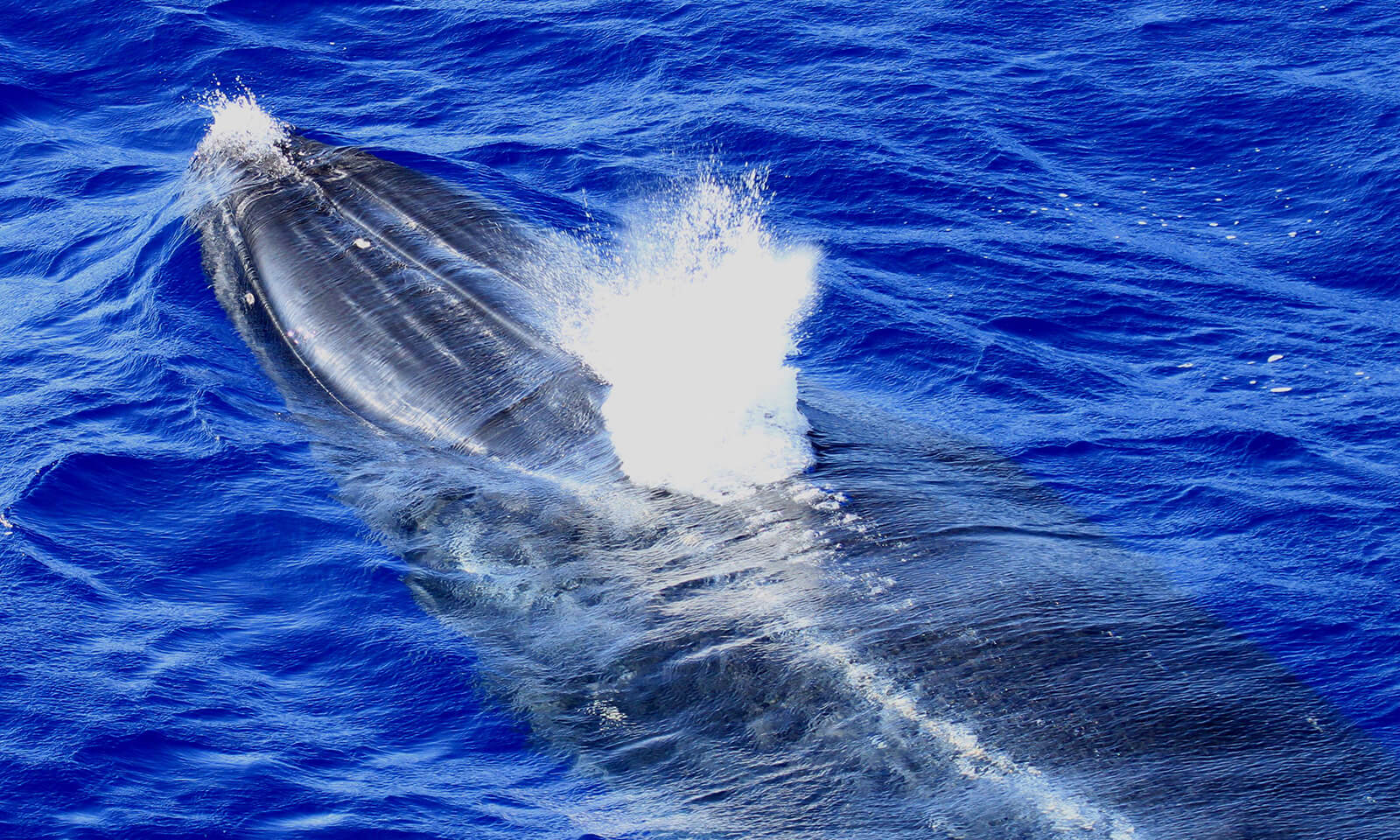It's time for Bearded Whales to pass through the Azores!
However, there are still several details that make us intrigued with regard to the identification of these cetaceans (bearded whales). One of these intriguing details is the similarities between the Sei whalesBalaenoptera borealis) and the Bryde Whales (Balaenoptera edeni). These whales are similar both in size and body shape, which makes it difficult to identify them when we see them at sea, especially when the weather conditions are not the best or if we can't get close enough. This similarity is such that it was not until the early 1990s that whalers realized that they were hunting two different species.
Biology of both species – Sei Whales and Bryde's Whales
Sardinheiras whales can reach 18 m in length and 45 t in weight. They can live up to 70 years and feed mainly on krill, small fish and squid. Its color varies between gray and dark brown, sometimes almost black. When they dive, they can stay under water for 5 to 20 minutes and when they return to the surface, their breath takes the form of a narrow cloud that can reach 3 m in height. They are the fastest whales, reaching 60km/h in displacement. In the Azores they are usually seen in groups of 2 to 6 individuals.

Bryde's Whales can measure up to 16 m in length and weigh up to 40 t maximum. They live up to approximately 65 years, feeding mainly on krill and small fish. They usually have a grayish color but there may be variations in color, size and structure of the beards between populations from different locations, which helps to make their identification difficult. They spend most of their time on the surface, diving for less than 2 minutes, but on deeper dives, which reach 300 m, they can stay up to 20 minutes without surfacing. Its breath is high and narrow, with 3 m to 4 m in height.

What distinguishes them
The feature that allows us to more easily differentiate these two species is that the Sardine Whale has only one crest that goes from the tip of the head to the blowhole, while Bryde's Whale has two more lateral crests in addition to that. When we are able to see the whales' heads, we can use this criterion, but when circumstances do not allow it, our mission becomes more difficult.

When they return to the surface after diving, it is possible to see the blow and the dorsal fin simultaneously in both species, but a peculiarity of the Sei Whale is that it does not arch its back as much as other whales when diving. Both have a high and falcate dorsal fin (with the tip curved backwards) but the Sei Whale can reach 55 cm while the Bryde Whale reaches a maximum of 35 cm. In addition, the tip of the upper jaw is usually quite flat in Bryde's Whales, while in Sei Whales it tends to be curved downwards.
The time of year when these two species are sighted can also facilitate their identification. In other words, Sei whales are more common to see in the Azores in spring, like the rest of baleen whales, due to their annual migrations. In turn, Bryde's Whales do not perform this type of migration, remaining in lower latitudes, with warm waters. Individuals recorded in Azorean waters were only seen in the summer months.
Both species have suffered a sharp decline due to whaling, and it is estimated that there are currently 80,000 Sei whales, about 1/3 of the population that existed before this practice. This species is classified as “Endangered” by the IUCN. The number of Bryde's Whales is estimated at around 90,000 to 100,000 individuals. So, when we see one of these species, regardless of whether we can differentiate them or not, it's always a huge luck and emotion!
